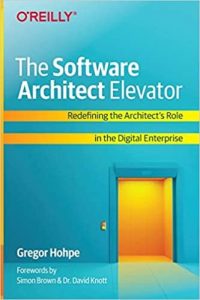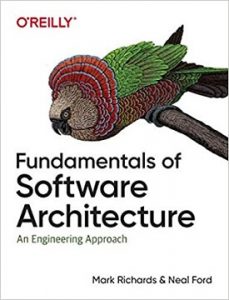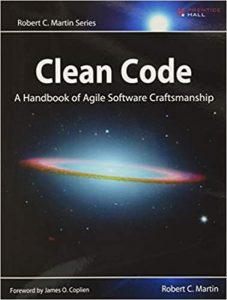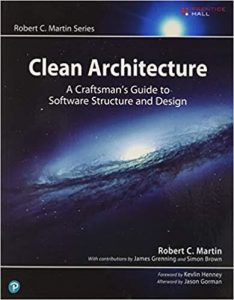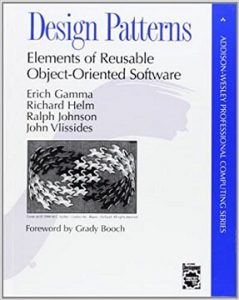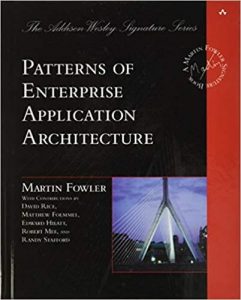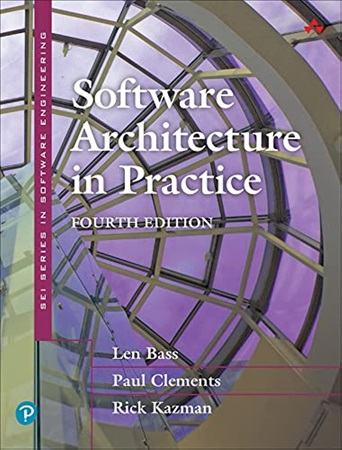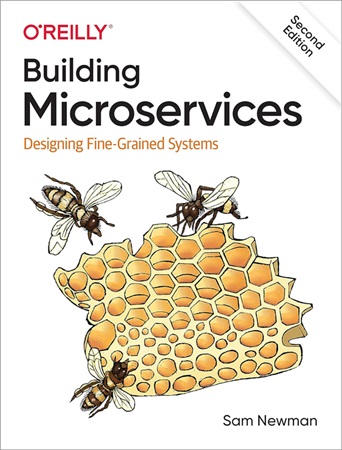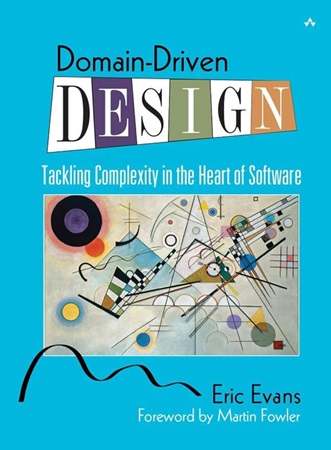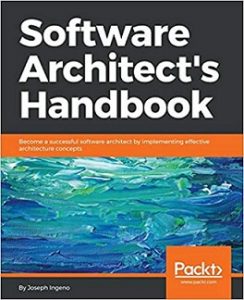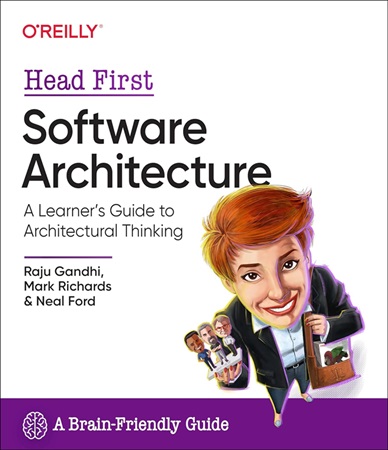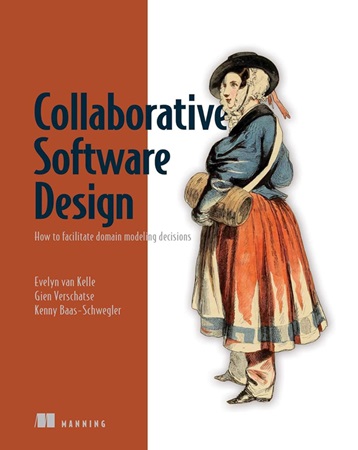Software architecture is a fundamental aspect of software development, whether you’re a seasoned coder or just starting out. In this guide, we will show you some great resources that cover everything from the basics to more advanced skills. These resources will help you get better at designing software. Please make sure to check out our recommendations.
Additionally, we’ve selected two additional books released recently to keep you abreast of the newest trends and knowledge. To learn more about software architecture, you can check our “Ultimate Guide” below.
12 Best Software Architecture Books
Best Software Architecture Books: Reviews
1. The Software Architect Elevator
- Author: Gregor Hohpe
- Edition: 1st Edition
Why Do We Recommend: Practical guidance for navigating IT transformations.
Book Review:
This book by Gregor Hohpe takes the lead. “The Software Architect Elevator” offers valuable insights into the changing role of software architects in today’s digital world. Unlike traditional approaches, Hohpe emphasizes the need for architects to blend organizational know-how with technical skills to drive meaningful change.
Through real-life stories and practical tips, this book helps architects, senior developers, and IT pros shape technology strategies and lead organizational shifts effectively. Hohpe’s metaphor of the architect elevator, linking the boardroom to the engine room, underscores the importance of bridging business and technology. With clear, actionable advice, “The Software Architect Elevator” is a must-read for anyone navigating modern IT challenges.
What Will You Learn?
- Navigate complex organizational structures.
- Effectively communicate technical concepts to upper management.
- Drive IT transformations aligned with business strategy.
- Learn from real-world anecdotes and hard-learned lessons.
- Understand the critical role of architects in digital enterprises.
2. Fundamentals of Software Architecture
- Authors: Mark Richards, Neal Ford
- Edition: 1st Edition
Why Do We Recommend: Comprehensive overview for aspiring and existing architects.
Book Review:
“Fundamentals of Software Architecture” by Mark Richards and Neal Ford is essential reading for those interested in software architecture. This book covers various topics such as architectural characteristics, patterns, component determination, and presentation techniques, giving readers a thorough understanding of the subject.
Richards and Ford, leveraging their teaching background, simplify complex ideas, making this book suitable for both newcomers and seasoned architects. Emphasizing modern architectural principles and recent advancements, it equips readers with the insights and tools needed to excel in the ever-evolving field of software architecture.
What Will You Learn?
- Understand architectural patterns and principles.
- Master component determination and granularity.
- Develop effective team management and communication skills.
- Explore modern engineering practices and operational approaches.
- Gain insights into repeatable results and metrics in software architecture.
3. Clean Code: A Handbook of Agile Software Craftsmanship
- Author: Robert C. Martin
- Edition: 1st Edition
Why Do We Recommend: Essential guide for improving code quality and developer productivity.
Book Review:
For those seeking a fresh perspective on software development, “Clean Code” by Robert C. Martin offers a game-changing approach. Martin advocates for the significance of writing clean, easily maintainable code with convincing arguments and real-world examples. Through this handbook of agile software craftsmanship, he urges programmers to rethink their professional ethics and embrace clean coding principles.
Split into three sections, the book delves into principles, patterns, and practices, equipping readers with case studies and practical tips to improve their coding habits. Whether you’re a developer, project manager, or software engineer, “Clean Code” is an essential read for anyone aiming to create top-notch, sustainable codebases.
What Will You Learn?
- Differentiate between good and bad code.
- Write clean, efficient code following best practices.
- Create meaningful names, functions, and classes.
- Format code for maximum readability.
- Implement thorough error handling and testing strategies.
4. A Craftsman’s Guide to Software Structure and Design
- Author: Robert C. Martin
- Edition: 1st Edition
Why Do We Recommend: Practical solutions for designing robust software architectures.
Book Review:
Robert C. Martin, known as Uncle Bob, shares his expertise in software architecture in “Clean Architecture.” This book offers valuable insights into structuring and designing software systems for long-term maintainability and flexibility.
With clear explanations and real-world examples, Martin provides universal rules of software architecture that can boost developer productivity and project success. It’s essential reading for software architects, engineers, and managers aiming to create durable and adaptable software architectures that endure over time.
What Will You Learn?
- Essential principles for achieving clean software architecture.
- Core disciplines and practices for successful architectural design.
- Optimal structures for various application types.
- Strategies for defining boundaries and layers within architectures.
- Common pitfalls and how to avoid them in software design.
5. Design Patterns: Elements of Reusable Object-Oriented Software
- Authors: Erich Gamma, Richard Helm, Ralph Johnson, John Vlissides
- Edition: 1st Edition
Why Do We Recommend: Comprehensive guide to essential design patterns for software development.
Book Review:
This book, “Design Patterns: Elements of Reusable Object-Oriented Software,” is a cornerstone in software engineering. It offers a collection of tried-and-tested solutions to common design challenges. Penned by four prominent experts, this book shares priceless wisdom on crafting flexible, graceful, and reusable software designs.
Through methodical naming, detailed explanations, and thorough evaluations of recurring patterns, developers gain the tools to create sturdier and more maintainable software systems. Packed with real-world examples and actionable advice, it remains an indispensable resource for software developers, architects, and engineers aiming to enhance their design prowess and develop more effective and adaptable software solutions.
What Will You Learn?
- Understand the principles and benefits of design patterns.
- Learn how to apply design patterns to solve common design problems.
- Explore the context in which each pattern is applicable.
- Gain insights into the consequences and trade-offs of using design patterns.
- Implement design patterns in various object-oriented programming languages.
6. Patterns of Enterprise Application Architecture
- Author: Martin Fowler
- Edition: 1st Edition
Why Do We Recommend: Essential guide for enterprise developers facing unique challenges.
Book Review:
Martin Fowler’s “Patterns of Enterprise Application Architecture” stands as an essential read for developers venturing into the intricate realm of enterprise application development. Focused squarely on addressing the specific challenges encountered in enterprise settings, Fowler presents proven solutions to typical architectural obstacles.
This book provides developers with lucid explanations and tangible examples, enabling them to construct scalable and effortlessly manageable enterprise applications. Whether grappling with reservation systems, financial platforms, or supply chain software, this resource furnishes the invaluable insights and direction needed to navigate the complexities of enterprise development with assurance.
What Will You Learn?
- Learn unique challenges of enterprise application development.
- Learn proven patterns and solutions for enterprise architecture.
- Gain insights into designing scalable and maintainable applications.
- Explore the context in which each pattern is applicable.
- Apply architectural principles to address performance and concurrency issues in enterprise applications.
7. Software Architecture in Practice 
- Authors: Len Bass, Paul Clements, Rick Kazman
- Edition: 4th Edition
Why Do We Recommend: Definitive guide to modern software architecture principles and practices.
Book Review:
In modern contexts, “Software Architecture in Practice” provides a thorough and practical roadmap for grasping and executing software architecture. This fourth edition has been refreshed to include crucial subjects like mobility, cloud computing, energy management, DevOps, and quantum computing, ensuring readers are well-prepared to architect software systems proficiently. Penned by esteemed professionals, the authors delve into the complete software architecture lifecycle, from conception to assessment to oversight. Whether you’re an experienced architect or just starting out, this book furnishes valuable insights for navigating the intricacies of present-day software development.
What Will You Learn?
- Learn software architecture basics and importance.
- Master practical techniques for creating architectures.
- Discover effective strategies for overseeing architectures.
- Explore new technology’s impact on architectures.
- Enhance critical quality aspects like performance.
- Improve security and scalability of architectures.
- Gain insight into assessing software architectures effectively.
8. Building Microservices
- Author: Sam Newman
- Edition: 2nd Edition
Why Do We Recommend: Comprehensive guide to developing and managing microservices architectures.
Book Review:
“Building Microservices” by Sam Newman offers a thorough examination of the challenges and best practices associated with designing and implementing microservices architectures. In this expanded second edition, Newman provides clear explanations and practical advice for architects, developers, testers, and IT operators navigating the complexities of distributed systems.
Through real-world examples and case studies, readers gain insights into modeling, integrating, testing, deploying, and monitoring microservices effectively. With a focus on aligning system design with organizational goals, this book equips professionals with the knowledge and tools needed to build resilient and scalable microservices architectures.
What Will You Learn?
- Grasp microservices: principles and their benefits.
- Dive into modeling and integrating strategies.
- Master testing, deploying, and monitoring methods.
- Align system design with organizational goals.
- Stay updated on UI, container, serverless.
9. Domain-Driven Design
- Author: Eric Evans
- Edition: 1st Edition
Why Do We Recommend: Essential guide for developers seeking to improve software design through domain modeling.
Book Review:
Our next recommendation is “Domain-Driven Design” by Eric Evans. This book is essential for anyone interested in creating software that accurately represents real-world business domains. Eric Evans provides practical advice and examples to illustrate how effective domain modeling can result in software solutions that align closely with business requirements and are flexible to changes. It’s a must-read for software developers, architects, and designers, offering valuable insights into the process of understanding, modeling, and implementing domains. By following the principles outlined in this book, readers can improve their software design abilities and build more robust and adaptable systems.
What Will You Learn?
- Domain modeling vital for effective software design.
- Identify, model domain concepts for clear understanding.
- Manage complexity, uncertainty in software projects.
- Refine domain models iteratively for improved results.
- Understand the link between domain-driven design, agile.
10 . Software Architect’s Handbook
- Author: Joseph Ingeno
- Edition: Not specified
Why Do We Recommend: Comprehensive guide for developers aspiring to excel in software architecture roles.
Book Review:
“Software Architect’s Handbook” by Joseph Ingeno provides a comprehensive overview of the principles, patterns, and best practices essential for success in the field of software architecture. With a focus on practicality and real-world applications, this book equips readers with the knowledge and skills necessary to design efficient and scalable software architectures.
From understanding the fundamentals of software architecture to implementing design patterns and managing legacy systems, Ingeno covers a wide range of topics essential for aspiring software architects. Whether you’re a seasoned developer looking to transition into an architecture role or a newcomer to the field, this handbook serves as an invaluable resource for honing your architectural skills and advancing your career.
What Will You Learn?
- Design software architectures using patterns and best practices
- Explore considerations for designing software architecture
- Continuously improve as a software architect
- Create loosely coupled systems to support change
- Understand the impact of DevOps on software architecture
2024 Latest Releases
11. Head First Software Architecture
- Author: Raju Gandhi, Mark Richards, Neal Ford
- Edition: 1st Edition
Why Do We Recommend: Engaging guide perfect for software developers transitioning into architecture roles.
Book Review:
This book, released this year, offers valuable insights into software architecture. “Head First Software Architecture” presents a user-friendly approach to grasping architectural concepts, suitable for software developers of all levels. Authored by industry experts Raju Gandhi, Mark Richards, and Neal Ford, it delves into the essence of architecture versus design, elucidating the interplay between code, components, and architectural styles.
Through vivid examples and practical exercises, readers navigate the complexities of software architecture with ease. Whether you’re a novice or aiming to refine your skills, this guide is a must-have for enhancing your understanding of software architecture in an engaging and interactive manner.
What Will You Learn?
- Gain a solid understanding of architectural thinking
- Differentiate between architecture and design
- Explore common architectural styles through practical examples
- Grasp complex concepts through engaging visuals and exercises
- Develop valuable skills to excel in software architecture roles
12. Collaborative Software Design
- Author: Evelyn van Kelle, Gien Verschatse, Kenny Baas-Schwegler
- Edition: 1st Edition
Why Do We Recommend: Practical guide for involving stakeholders in software design decisions.
Book Review:
Ending our blog with the most recent release, our top pick for software architecture books is “Collaborative Software Design”.
Written by Evelyn van Kelle, Gien Verschatse, and Kenny Baas-Schwegler, “Collaborative Software Design” offers a thorough approach to involving stakeholders in the software design process. This book provides valuable insights and techniques for facilitating collaborative modeling sessions.
It introduces tools like Business Model Canvas, Event Storming, Example Mapping, and Wardley Mapping, empowering readers to prepare and conduct effective modeling sessions that incorporate input from both business and technical stakeholders. Additionally, the guide offers practical advice on managing conflicts, addressing resistance, and documenting sessions, ensuring that software teams possess the necessary skills to make informed design decisions together.
What Will You Learn?
- Prepare and facilitate collaborative modeling sessions effectively
- Utilize tools such as Business Model Canvas and Event Storming
- Incorporate input from both business and technical stakeholders
- Manage conflicts and handle resistance during modeling sessions
- Document sessions and report findings to stakeholders
Software Architecture – Ultimate Guide
Software architecture is like the blueprint for software systems. It’s all about how different parts of the software work together. This guide gives you a deep dive into software architecture, why it’s crucial, the role of architects, and the key design principles behind it all.
What’s Software Architecture?
In simple terms, software architecture is the backbone of a software system. It decides how everything in the software fits together, from big structures to small details. It covers technical stuff like which programming languages to use and also the big-picture decisions guiding the software’s growth over time. Software architecture gives a clear picture of the system, helping developers make smart design choices to meet all the requirements.
Why It Matters?
Software architecture is a big deal. It’s what sets up software projects for success in the long run. A well-thought-out architecture makes sure the software can grow and adapt as needs change. It provides a roadmap for making the software bigger without making it messier. Good architecture also makes teamwork easier and problem-solving smoother throughout the software’s life.
The Architects’ Role
Software architects are the ones in charge of the software’s design. They take business needs and technical limits and turn them into a plan for the whole team to follow. Architects guide the team in building the architecture and make sure the final product is up to scratch. They also pick the right tools and methods to bring the plan to life.
Design Principles You Need to Know
There are some golden rules in software architecture that everyone follows. These principles help architects design systems that are strong, easy to keep up, and easy to work on together.
1. SOLID Principles
This set of rules by Robert C. Martin is like the bible for building good object-oriented code:
- Single Responsibility Principle (SRP): Each part of the code should do just one thing.
- Open/Closed Principle (OCP): You can add new stuff to the code without changing what’s already there.
- Liskov Substitution Principle (LSP): You can use new parts of the code just like you use the old ones.
- Interface Segregation Principle (ISP): Only use what you need from each part of the code.
- Dependency Inversion Principle (DIP): Don’t depend on the little details. Instead, use bigger ideas.
2. DRY Principle
This one says, “Don’t Repeat Yourself.” It means every bit of the code should have one clear way to do things. Following this rule helps keep the code simple and easy to manage.
3. KISS Principle
“Keep It Simple, Stupid” is all about making the software as simple as possible while still doing what it needs to do. Simpler code means fewer mistakes and easier fixes.
Core Concepts in Software Architecture
Besides the rules, architects need to know some big ideas to build great software.
- Modularity: Breaking the software into smaller, separate parts makes it easier to work with. Each part does its job, and you can change or add parts without messing up the whole thing.
- Abstraction: Abstraction hides the complicated stuff behind simple ideas. It makes the software easier to understand and change.
- Encapsulation: This is like wrapping up the data and rules in the software so they stay safe from outside interference. It keeps everything tidy and makes changes less risky.
- Coupling and Cohesion: Coupling is how many parts of the software depend on each other. Low coupling means less dependence, which makes the software easier to change. Cohesion is how well parts of the software work together. Good cohesion means each part has one clear job.
So, that’s software architecture in a nutshell. With the right principles and concepts, architects can build software that’s ready for anything, from small tweaks to big changes, and that’s a win for everyone involved.
Conclusion
As we conclude, we hope you’re closer to selecting the ideal book for your needs. If you’re still uncertain, don’t fret. Allow us to offer some suggestions.
- For beginners, laying a solid foundation is key. Consider starting with “Fundamentals of Software Architecture.”
- Professionals ready to delve deeper beyond object-oriented architecture should consider “Building Microservices.” This comprehensive guide is particularly beneficial for those in distribution companies.

